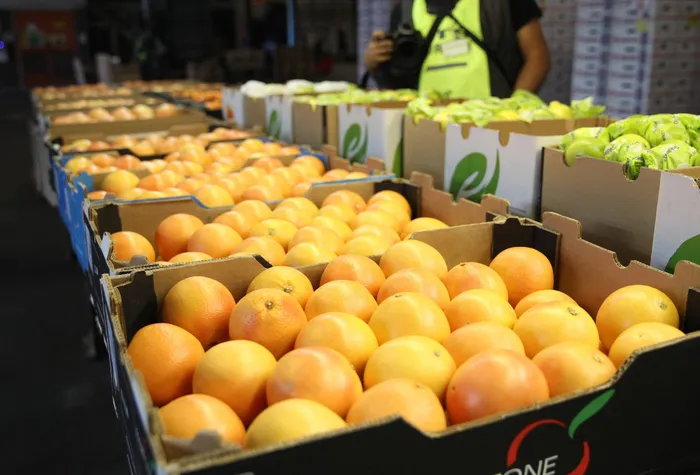Impact of tariffs on SA citrus exporters will hinge on health of US consumer: Absa report
AGRICULTURE

South Africa is a counter seasonal citrus supplier to the US – the primary exporting months to the US run from July to October, with oranges and mandarins being the main citrus products destined for export.
Image: Doctor Ngcobo / Independent Newspapers
Banele Ginidza
South African citrus producers and other participants in the citrus export value chain may need to absorb a portion of the 30% reciprocal tariffs imposed by President Donald Trump if American consumers cannot stomach hefty price increases in the coming months, Absa said in its report on Tuesday.
South Africa is a counter seasonal citrus supplier to the US – the primary exporting months to the US run from July to October, with oranges and mandarins being the main citrus products destined for export.
“With other notable Southern Hemisphere exporters like Chile already sending the bulk of their orange exports (75% or more) to the US during this period, there is limited capacity from other Southern Hemisphere producers to substitute South African volumes, which become uncompetitive based on the imposed 30% import levy,” said Dr Marlene Louw, senior economist at Absa AgriBusiness.
Louw said it was likely that exports from other geographies and competition from other fruit types will trigger changes in consumption patterns, and that some portion of the duty impact would need to be absorbed by other participants in the citrus value chain
“Given the limited capacity for alternative sourcing, we expect the biggest portion of the duty increases to be passed on to the US consumer. However, whether consumers have the capacity and willingness to absorb the full tariff increase remains uncertain,” Louw said.
She said concessions to Mexican automotive part imports made in March suggest that value chain stakeholders could make a case for adjustments if US consumers and business interests are negatively affected.
“A specific consideration that could affect further announcements out of the US is the impact of tariffs on food availability and/or affordability in the US,” Louw said.
In contrast to oranges, South African mandarins supplied into the US from June to October face competition from Peru and Chile. Whilst there is limited capacity from Chile to fill a gap left by the possible absence of South African volumes facing a 30% tariff, Peru sends only 50% of its mandarins into the US.
“Given a more competitive duty (a 10% Liberation Day tariff for Peru), Peruvian volumes could be diverted from destinations such as the EU, into the US market,” Louw said.
“Late mandarin exports from Peru are also likely to benefit from strong expansion in the mandarin area up to 2020, which should now be reaching full production. This could add to alternative volumes sourced due to the 30% levy on South African produce.”
Given the different features of these product categories, the upcoming season will provide valuable lessons on US consumers' ability to absorb higher prices for perishable products and the ability of value chains to divert volumes to alternative jurisdictions.
This is, however, associated with notable risks.
Over the short term, all stakeholders should leverage their relationships to lobby for reduced levies that are comparable to other Southern Hemisphere agricultural exporters. This is imperative to retain market share for South African products.
In 2024, citrus exports from South Africa to the US amounted to approximately R1.8 billion. This is 5.4% of the total citrus exports from South Africa. For the Western Cape citrus-producing area, the only area that has access to US markets, the share of total exports to the US amounted to around 20% for the same period.
Recent developments around US imposed tariffs and the response by global trading partners suggest that controlled trade based on the rules governed by the World Trade Organisation is disappearing.
“To navigate this, value chain players and industry stakeholders will need to enhance their understanding of the law, economics and science that are in play when trade agreements are considered. This will likely increase the transaction costs of trading globally but is an imperative to remaining efficient and agile amidst higher uncertainty,” Louw said.
BUSINESS REPORT
Related Topics: